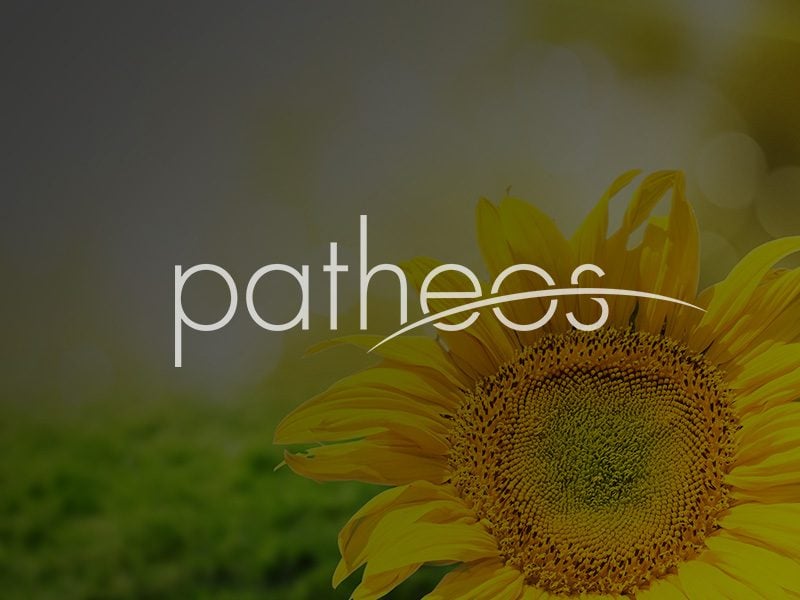Alexandrian Tradition is, in terms of ritual, a minor variant on Gardnerian Witchcraft, although its adherents now far outnumber the orthodox Gardnerians. The tradition goes back to Alexander Sanders (1926-1988), who in 1963 was initiated by Pat Kopanski, an initiate of Patricia Crowther, and allowed to copy her Book of Shadows. As soon as Gerald Gardner died, Sanders began claiming that he had been initiated as a witch at age nine by his grandmother and had received the Book of Shadows from her. However, Sanders’ Book of Shadows, as published by Stewart Farrar (1916-2000) in What Witches Do, is the Gardnerian Book as rewritten by Doreen Valiente during the 1950s; not only did she claim credit for her work in The Rebirth of Witchcraft, but these dates have been substantiated by the ordinary techniques of literary scholarship. Still, Sanders’ claims were plausible enough for him to gain a large following, and the Alexandrian witches have become one of the largest subgroups in the Craft movement. After Sanders’ death, the record was set straight by Stewart and Janet Farrar.
(Much of the information I have about the “Boston Alexandrians” comes from an unpublished manuscript entitled “Witches at the Hub of the Universe” that was compiled by Lord Summanus [Jim Baker], Lady Morven, and Lord Starspawn. Jim sent it to me about 1994 for use in this sort of history.)
Jim Baker heard about the Craft in England during the late 1960s, and went to England to be trained by Alex and Maxine Sanders. He, working with a woman friend, was initiated to all three degrees by Sanders at Lammas 1970 and then returned to Boston, where he founded the coven Du Bandia Grasail in December 1970.
In September 1971 Jim met Mary Nesnick, who had begun her Craft career in Lady Theos’s Gardnerian Long Island coven, until she grew dissatisfied with their approach. She wrote to Sanders to ask if she could transfer her allegiance from the Gardnerian tradition to the Alexandrian. He agreed, and (no doubt with tongue in cheek) conferred on her the title of “Grand High Priestess of the Americas.” Taking the name of Lady Dyionsya, Nesnick received her Alexandrian training and initiation from a Patrick Sumner, who was able to come to Americaon occasion. She then founded the New York coven, the second Alexandrian coven in the US. Nesnick immediately set about to expand the Alexandrian groups in America through public availability and a wide correspondence, as well as to in some ways regularize their workings. She soon created what she called “Algard” Tradition by blending Alexandrian and Gardnerian practices (not a difficult task), and published the Alexandrian Newsletter, which, with issue #7, became the AlGard Newsletter.
Her more prominent initiates included the writer Hans Holzer, as well as the late Roy Dymond of Toronto, whose High Priestess, Lady Arianrhod, in turn initiated Charles Arnold, the first person to gain official recognition of Wicca as a religion from the Canadian government. Lady Morgana Davies was initiated through this coven, with Lord Aquarius (Hans Holzer) serving as High Priest, in early 1970. Lady Morgana then founded and headed the Baltimore Coven, which was, so far as she knows, the first traditional coven inMaryland. Another important Alexandrian initiation by Nesnick was that of Lady Ayeisha (Carolyn Kassa; d. 1998) of Baltimore, worked by Jim Baker, Roy Dymond (who was a visitor, not a member), Lady Morgana Davies (Ayeisha’s mother), and several others in Boston on Mystery Hill on Sept. 18, 1971. After many Alexandrians, save for the members of Du Bandia Grasail, had defected to Nesnick’s Algard Tradition, she dropped from sight in the late 1970s.
Other Alexandrian covens in America in the 1970s included those of: C. Larry Fidler in South Bend, Indiana; Roberta Kennedy in Cincinnati, Ohio; Joe Ferrante of Lawton, OK, founder of The Witches Broomstick, who was initiated into Du Bandia Grasail on November 6, 1971, but was soon alienated by Nesnick and joined a different tradition; and apparently one headed by a Vasilios Choulos in San Francisco.
Jim Baker, being a trained historian, began studying the problems of Craft history in the early 1970s and soon arrived at the conclusion that the Craft as we have it is constructed entirely out of known literary and social materials available in the 1940s and 1950s—which, of course, was not what he had been told by Sanders. Feeling betrayed and uncomfortable at having passed on false information to his coveners, he closed Du Bandia Grasail down in 1974.
The members of Du Bandia Grasail then dispersed into several successor organizations:
Ralph Des Rosier’s Order of Ganymede and Coven of the Chthonioi (which was still extant in 1993), which practiced a blend of Wicca and Ceremonial Magic. and which gave rise to the Symbios family of covens; to Spawnfar and the line of covens that descend from it; and to Starcircle;
a coven called Ar Dealrach Baintighearna, which gave birth to Earthrose, which in turn gave rise to the Starkindler line; and
a coven called Uil’iomlan Tri-fillte Mathair (Coven of the Omniscient Threefold Goddess), which would come to be headed by the Lady Morven who founded Harvest magazine (published from 1975 to 1993) and by Andras Corban Arthan; it was active from 1974 to the early 1980s.
(I will discuss all of the preceding in later installments. An excellent diagram of all the Alexandrian covens in the Boston area from 1969 down to the present can be found at janus.spawnfar.net/dbgline.html.)
Keepers of the Ancient Mysteries
Much of what I know about the Keepers of the Ancient Mysteries I learned during a long phone conversation on January 22, 1995, with Lady Morgana Davies, who has been very generous with her information, which she then updated in an email of Dec. 7, 2010. Lady Morgana is also an Elder of the Foxmoore Temple in Laurel, MD, and, having been cross-initiated into Lady Gwen Thompson’s NECTW Tradition, was serving as High Priestess of the Coven of Minerva in Providence, RI, in 1995.
Early on, Morgana and Ayeisha had met and visited with Lady Theos in NY and with Lady Gwen in Connecticut. Lord Merlin (Bernard S.) had been initiated by Gwen and had been commuting from Maryland to Connecticut for training. When Gwen learned that Morgana had a coven inMaryland, she phoned Morgana to ask if she would consider taking Merlin on, so that he wouldn’t have to make that long drive. Morgana and Ayeisha drove up to Connecticut to visit Gwen, thus meeting her High Priest, Owen Rowley, and agreed to have Merlin work with them.
The Keepers of the Ancient Mysteries was founded in Baltimore by Lady Morgana, along with Elders of other Craft traditions, including Gardnerian and Elefsinian, largely because they needed a way to work together and with the seekers in the Baltimore/Washington, DC, area being referred to them by Theos, Mary Nesnick, Jim Baker, and others in the early 1970s. The Elders included Lady Morgana; Lady Antigone (Pat P.), whose Nea Elefsis coven met in Bethesda and who began the KAM Newsletter in 1979; Lord Merlin; Lady Ayeisha, who held Second degree at the time, but was later raised to Third by Jim Baker; and Lady Alexandria of Foxmoore, in Laurel, MD. They pooled their Sabbat scripts to create ones that they could all work with comfortably. While discussing the best way to describe their efforts, Lady Antigone commented, “Well, whatever else we may be doing, we are keeping the ancient mysteries”—and so they acquired their name. Lady Ayeisha was then chosen to be the first High Priestess of KAM, which, Lady Morgana told me, was always Alexandrian based. This sequence provides a clear example of a pattern that has reappeared many times: what was begun as a project to enable local networking then evolved into a new Tradition. (I know “new Tradition” sounds like an oxymoron, but everyone in the Craft knows what it means.)
Other groups active in the general area around the District of Columbia at that time included Debbie Kearney’s Children of the Moon in Bladensburg, MD; and Joseph Golden’s New Moon Pagan Group in Washington, DC.. David and Beverly Webster’s Coven of the East was relatively nearby, in Portsmouth, VA.
Witchcraft as a Science
The Witchcraft as a Science Tradition fits neatly here in the story, given Salem’s proximity to Boston and the interactions between the two Traditions in the following years.
Laurie Cabot (born March, 6, 1933, in Oklahoma, while her family was moving to California) began as a non-Gardnerian-style Witch, but assimilated more and more to standard Pagan Witchcraft during later decades. She relates that a woman on the staff of her private high school in Boston encouraged her studies in the paranormal, and that eventually her coven of three women gave her an initiation that involved anointing her with oil, dubbing her Witch with a sword, and her impaling the earth with it, with a declaration that she had become a Witch—nothing like the Gardnerian script.
In the late 1960s she made a vow to the Goddess and the God that she would live her life totally and publicly as a Witch, and thereafter dressed in only long black robes. This generated much controversy, but did not interfere with her teaching, even at Salem State College; she had moved to Salem, MA, near the site of the infamous American witch trials, in about 1970. She established Crow Haven Corner, a shop that became a major tourist attraction in Salem, and the annual Witches’ Ball at Samhain, also a gala event, as well as the Witchcraft as a Science Tradition. She apparently was encouraged in this effort by Theodore Parker Mills (d. 1996), who founded the New England Council of Elders / Parker Coven in 1967.
After some years of trying, she was given the title of “The Official Witch of Salem” by Massachusetts governor Michael Dukakis. She also received the Paul Revere citation, given only to worthy citizens, for her work with dyslexic children, and was a member of the executive board of the Salem Chamber of Commerce, which she joined in 1980. She clearly has contributed greatly to a positive public perception of the Craft movement.















